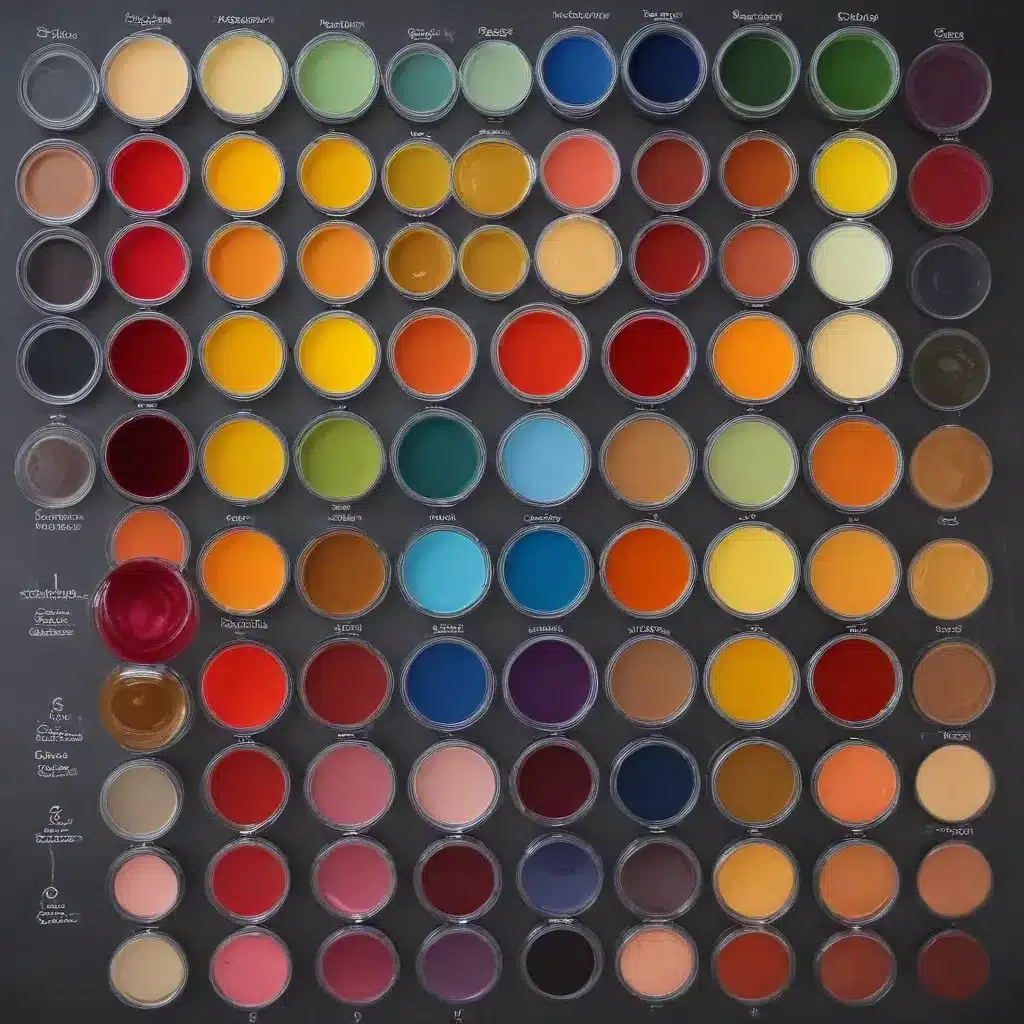
Color: The First Impression on the Palate
As seasoned culinary professionals, we know that the visual appeal of a dish is just as important as its taste and aroma. In fact, our eyes often dictate our perception of flavor long before our taste buds have a chance to weigh in. The intricate relationship between color and our perception of food is a fascinating area of study, with profound implications for both home cooks and professional chefs.
The human brain is hardwired to associate certain colors with specific flavors and textures. From birth, we begin to form these mental connections, which are reinforced throughout our lives. A bright yellow pudding, for instance, immediately signals a lemon or banana flavor, while a deep red jelly bean conjures up thoughts of cherry or cinnamon. These color-flavor associations are not merely subjective – they have a strong scientific basis.
“Showing One’s True Colors? To give the impression of a certain taste, flavor, or quality, food coloring or dyes are often added to processed, packaged, and even fresh foods.”
Our eyes send signals to the brain well before our taste buds have a chance to detect the actual flavors of a dish. This means that the visual cues we receive can profoundly influence our expectations and, ultimately, our experience of a food’s taste. This psychological effect is something that food companies have long known and leveraged to their advantage.
Manipulating Color for Perception
Food coloring and dyes are commonly used to enhance the appearance of processed, packaged, and even fresh foods. By adding a red colorant to the skin of an apple, for example, manufacturers can influence consumers into believing the fruit is sweeter in taste. This manipulation of color is not limited to processed foods; it is also used in the seafood industry, where farm-raised salmon is often dyed pink to give the impression of high quality and freshness.
“Without these visual cues, our taste buds might get confused and not recognize the lemon flavor in pudding or cherry flavor in jelly beans that we’ve grown to expect.”
In a study published in the Journal of Food Science, researchers found that people’s perception of flavor was significantly affected by the color of the drink they were tasting. A cherry-flavored drink manipulated to be orange in color was thought to taste like an orange drink, while a cherry drink manipulated to be green in color was perceived as having a lime flavor. This highlights the powerful role that color plays in our overall experience of a food’s taste and quality.
The Science of Freezing and Color Preservation
The appearance and color of fresh fruits and vegetables can also be significantly affected by the freezing process. As water makes up over 90% of the weight of most produce, the expansion of this water during freezing can rupture the cell walls, leading to textural changes and color loss.
“Freezing, when properly done, can preserve more nutrients than other methods of food preservation. To maintain top nutritional quality in frozen fruits and vegetables, it is essential to follow directions for pretreatment of the vegetables, to store the frozen product at zero degrees F and to use it within suggested storage times.”
To combat these effects, it is crucial to properly prepare and store frozen produce. Pretreatment, such as blanching, can help inactivate enzymes that cause color and nutrient degradation. Storing frozen foods at the recommended temperature of 0°F or lower, and using them within the suggested timeframe, can also help maintain the vibrant colors and high-quality appearance that we associate with fresh produce.
Harnessing the Power of Color in the Kitchen
As culinary professionals, we have a unique opportunity to harness the power of color in the kitchen. By understanding the science behind the visual appeal of food, we can make informed decisions about ingredient selection, cooking techniques, and plating presentations that will captivate our diners’ senses and elevate their overall dining experience.
“Fluctuating temperatures in the freezer can cause water vapor to form on the surface of the container. This is sometimes found in commercially frozen foods that have been improperly handled. To maintain top quality, frozen fruits and vegetables should be stored at zero F or lower.”
Whether we’re working with fresh, frozen, or processed ingredients, paying close attention to color can help us create dishes that are not only delicious but also visually stunning. By leveraging our knowledge of the science behind culinary color and appearance, we can truly become masters of our craft and provide our customers with unforgettable dining experiences.
Conclusion
The intricate relationship between color and our perception of food is a fascinating area of study, with profound implications for both home cooks and professional chefs. By understanding the science behind the visual appeal of food, we can make informed decisions about ingredient selection, cooking techniques, and plating presentations that will captivate our diners’ senses and elevate their overall dining experience.
Whether we’re working with fresh, frozen, or processed ingredients, paying close attention to color can help us create dishes that are not only delicious but also visually stunning. By leveraging our knowledge of the science behind culinary color and appearance, we can truly become masters of our craft and provide our customers with unforgettable dining experiences.
To stay up-to-date on the latest developments in the world of color and appearance measurement, be sure to subscribe to the Kitchen Warrior blog. Our monthly newsletter will keep you informed on the latest trends, best practices, and advanced technologies that can help you take your culinary skills to new heights.


